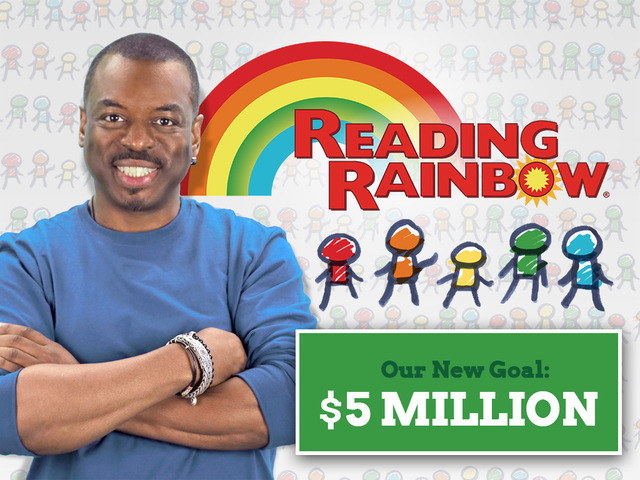So, did you hear LeVar Burton raised a whole bunch of money on Kickstarter last week to relaunch Reading Rainbow?
The original goal was to raise $1 million in just over a month, with donations used to expand the Reading Rainbow app Burton has already developed (he bought the rights in 2009) into a web-based destination. In less than a day, the project reached its initial goal amount. The campaign has raised more than $3.2 million and climbing.
If you’re famous and can leverage nostalgia, crowdfunding can be very lucrative, but not without some criticism. The Veronica Mars Kickstarter Campaign raised $5.7 million for a movie based on the television show, and Zach Braff built upon affinity for his first film with a $3.1 million campaign to finance his new film. Both efforts were roundly denounced in the media, with Kickstarter’s founders forced to go on record with their reasoning.
Which brings us to Reading Rainbow. Despite a tremendous outpouring of support from donors and largely positive media notices, there was this from The Washington Post’s Caitlin Dewey:
“Crowdfunding is theoretically supposed to bolster charities, start-ups, independent artists, small-business owners and other projects that actually need the financial support of the masses to succeed. It’s not supposed to be co-opted by companies with profit motives and private investors of their own…”
As someone who has dedicated his life to helping nonprofits, a part of me understands this criticism. But I’ve come to accept that the world is changing, that technology has created a way to connect people with projects they want to see happen, and they aren’t digging up 990s on Guidestar to make their decisions. More than 72,000 people have supported the Reading Rainbow project, and despite sour grapes from the traditional press, folks are wearing their support like a badge of honor on social media.
Rather than see this as a challenge to the charitable sector, I suggest nonprofits study it and look to replicate it themselves. So what are the ingredients to a really good Kickstarter campaign?
- Name Recognition: Millions have been generated for Reading Rainbow because many remember it as children. If your nonprofit doesn’t evoke similar nostalgia or recognition, try securing a spokesperson who does. Bringing a recognizable face to your crowdfunding project helps it get early traction and shares on social media.
- Marketing: A common mistake is to launch a crowdfunding campaign too early, assuming the site itself will market your campaign. In reality, a crowdfunding campaign is just like any other fundraising campaign – it needs a solid marketing plan to support it. Social and traditional media coupled with person-to-person outreach lights the spark of awareness that helps get the campaign off the ground, and can give it a boost if it lags.
- Personal Requests: The dream of every fundraiser is that their message will hit a tipping point, and the dollars will start pouring in from people who are completely new to the organization. But the reality is that a base of support is needed first, and that is most likely to come from friends of friends. Your organization’s stakeholders have to be willing to leverage their networks to get that first 10-25% of support.
- Rewards: Those who support a crowdfunded campaign are typically different than your annual fund donors. They are more likely to skew younger, are impulsive in their investment, and are definitely wooed by perks. LeVar Burton offered donors of $10,000 or more the opportunity to wear his famous Star Trek visor (so far no takers), but that benefit has been reported by nearly every reporter who has covered the story. What can your organization offer that might get you some ink?
In the future, we are likely to support artists, writers, directors, musicians and yes, corporations by voting with our credit cards at the R&D stage, mitigating the risk of new ventures. For now, the morality police are keeping the space clear for the little guys – don’t let this opportunity pass you by!
